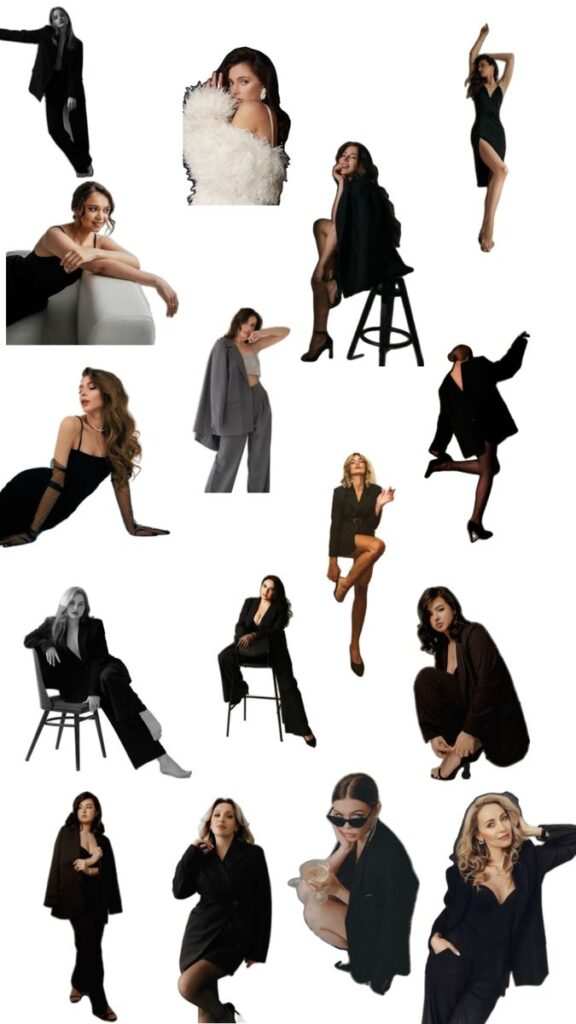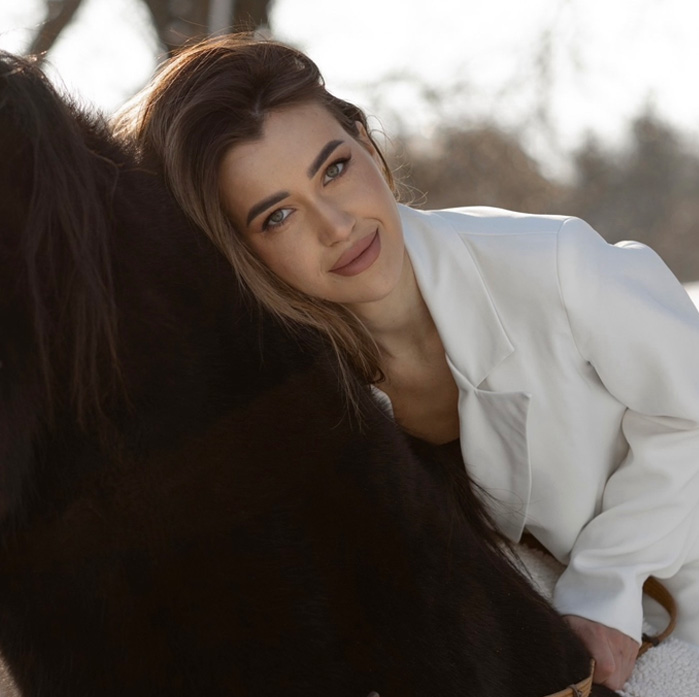Good photography often depends on effective poses. Learning the right poses can transform a good photo into a great one. Whether it’s for portraits or family gatherings, knowing how to position subjects is key to capturing their best angles.


This guide will provide photographers with a variety of poses that can help create stunning images. From simple tips to more creative options, it caters to both beginners and experienced photographers looking to enhance their skills. Mastering these poses can make any photo session more enjoyable and productive.
Exploring different poses can not only improve photographs but also inspire confidence in subjects. With the right techniques, anyone can take their photography to the next level.
Key Takeaways
- Effective posing can significantly improve photo quality.
- Creative posing techniques can help boost confidence in subjects.
- A variety of styles are available for different photography needs.
Essentials of Photography Poses


Mastering poses is key to creating great photographs. The way a subject holds their body, the camera angle, and even footwear can greatly influence the final image.
Understanding Body Position
Body position plays a major role in photography. The way a person stands or sits can convey different emotions and messages. For example:
- Angles: Tilting the body or head can add interest.
- Weight Distribution: Shifting weight onto one leg can create a more dynamic pose.
- Hands: Keeping hands relaxed and away from the body prevents awkwardness. Posing hands on hips or gently touching the hair can look natural.
It’s important to ensure that the body is not too stiff. Relaxed postures will look more inviting and genuine in photos. Practicing different poses can help build confidence and variety.
The Role of Camera Angle and Perspective


Camera angle and perspective can change the perception of a pose. The photographer should consider these aspects:
- Low Angle: This can make the subject appear taller and more powerful.
- High Angle: This can create a sense of vulnerability or softness.
- Eye Level: This is the most neutral perspective and is often the most relatable.
Changing the camera angle can also highlight different features. For instance, shooting from above can emphasize the subject’s eyes, while a lower angle may accentuate the jawline.
Impact of High Heels on Posture


High heels can affect how a person stands and poses in a photograph. They often change body posture by:
- Creating Height: High heels can elongate the legs, making the subject look taller and more elegant.
- Altering Stance: Wearing heels may lead to a more arched back and lifted chin, which can enhance confidence in a pose.
However, they can also cause discomfort, which may be visible in a photo. It is essential to find a balance between fashion and comfort to ensure natural and relaxed poses.
Portrait Photography Posing Guide


Portrait photography thrives on the ability to capture personality and emotion through poses. By utilizing specific techniques, photographers can enhance their subjects’ appearance. Three effective poses to consider are the Classic C Pose, the Elegance of the Back Arch, and the Captivating Over the Shoulder Looks.
Classic C Pose


The Classic C Pose is a staple in portrait photography. It creates a graceful curve in the body, making the subject look more dynamic.
Key points to achieve this pose:
- Positioning: Have the subject stand or sit with one shoulder slightly forward. This helps to create needed angles.
- Arms: The arms should be relaxed and slightly bent. This prevents stiffness and allows for natural movement.
- Head tilt: A gentle tilt of the head adds interest. It draws attention to the face and enhances the connection with the viewer.
By carefully arranging the body into a “C” shape, the photograph becomes more engaging and visually appealing.
Elegance of the Back Arch


The Back Arch adds elegance and sophistication to portraits. This pose highlights the subject’s figure and conveys confidence.
To execute this pose effectively:
- Spine position: Encourage the subject to arch their back. This creates a beautiful line that can elongate the body.
- Body weight: Shifting weight to one leg adds a natural bend to the hip. This enhances the curve of the body.
- Facial expression: A soft smile or a serious expression can change the vibe of the image. Choose based on the desired mood.
Utilizing the back arch pose can result in striking and memorable portrait photography.
Captivating Over the Shoulder Looks


The Over the Shoulder Look creates intrigue and draws the viewer’s attention to the subject’s face. This pose can convey a wide range of emotions.
To take an effective shot:
- Position: Have the subject turn slightly away from the camera while looking back. This angles the face beautifully.
- Head movement: A slight tilt of the head towards the camera adds dimension. It engages the viewer without overpowering the background.
- Eyes: The eyes should be expressive. This adds a personal touch to the portrait.
This pose is versatile and works well in both casual and formal settings.
Creative Experimentation in Posing


Photography poses offer a chance to showcase creativity and express individuality. By allowing subjects to have fun, trying different poses, and adding unique elements like lean back positions, photographers can create captivating images.
Encouraging Subjects to Have Fun
Creating a relaxed atmosphere is key. Photographers should encourage subjects to be playful and express themselves. This can be done through conversation or light humor.
When subjects feel relaxed, they are more likely to try new and creative poses. Simple prompts like “act like you’re dancing” or “imagine you’re on a fun adventure” can spark joy.
Fun poses often lead to candid moments that capture genuine emotions. Breathing life into the photos helps the photographer tell a story through the images.
Experimenting with Different Poses


Trying various poses allows for unique compositions. Photographers can guide subjects to explore their comfort zones while keeping the overall shot in mind.
Change the angle or ask the subject to shift their weight to one side. This can create dynamic shapes and lines in the frame.
Using props can also make the posing process more interesting. Items like hats, scarves, or chairs can give subjects something to interact with, adding depth to the shot.
Adding Visual Interest Through Lean Back Poses


Lean back poses can create an effortless vibe in photos. This position often looks casual and relaxed, which adds to the subject’s charm.
To try this, the photographer can ask the subject to lean back against a wall or sit on a ledge. This can make for visually appealing angles while enhancing the subject’s posture.
Encourage the subject to tilt their head or play with their hair while in this position. These small adjustments can lead to a more engaging photograph that captures attention.
Tips from Professional Photographers


Professional photographers have valuable insights on posing techniques. Understanding their advice can greatly improve the quality of photos. Here are some key tips to consider.
Advice on Posing Techniques
Professional photographers suggest keeping body angles in mind. Tilting the subject’s shoulders slightly can create a more interesting look. Also, placing weight on one leg can lead to a more relaxed stance.
Use hands wisely in poses. Avoid letting them hang loosely at the sides. Instead, use them to create shapes, such as resting on hips or gently touching the face.
Incorporating movement can also enhance photos. A slight turn of the head or a gentle shift in posture can add life. Encouraging laughter or conversation can lead to natural expressions, making the photo feel more genuine.
Selecting the Right Pose for the Subject


Choosing the right pose depends on the subject’s personality and body type. Photographers often assess what feels natural for the individual before deciding on poses.
For taller subjects, elongated poses, like reaching an arm upward, can highlight their height. For those who may feel uncomfortable, simple poses like hands in pockets can create ease.
In group photos, symmetry works well. Arranging individuals to balance height and size adds harmony. It is essential to consider the relationship between subjects; poses that reflect their dynamic often produce the best results.
How to Direct and Position Subjects


Clear communication is crucial when directing subjects. A professional photographer should provide simple instructions. For instance, saying “turn your head slightly” is more effective than vague terms.
Establishing a comfortable space makes subjects feel at ease. Encouragement or reassurance can help relax them before capturing the shot.
Using visual cues can also aid in directing. Demonstrating poses or showing examples on a phone can clarify expectations. Good direction leads to a frame filled with genuine emotion and connection.
- 10shares
- Facebook0
- Pinterest10
- Twitter0



